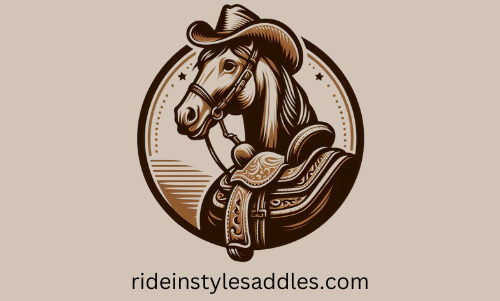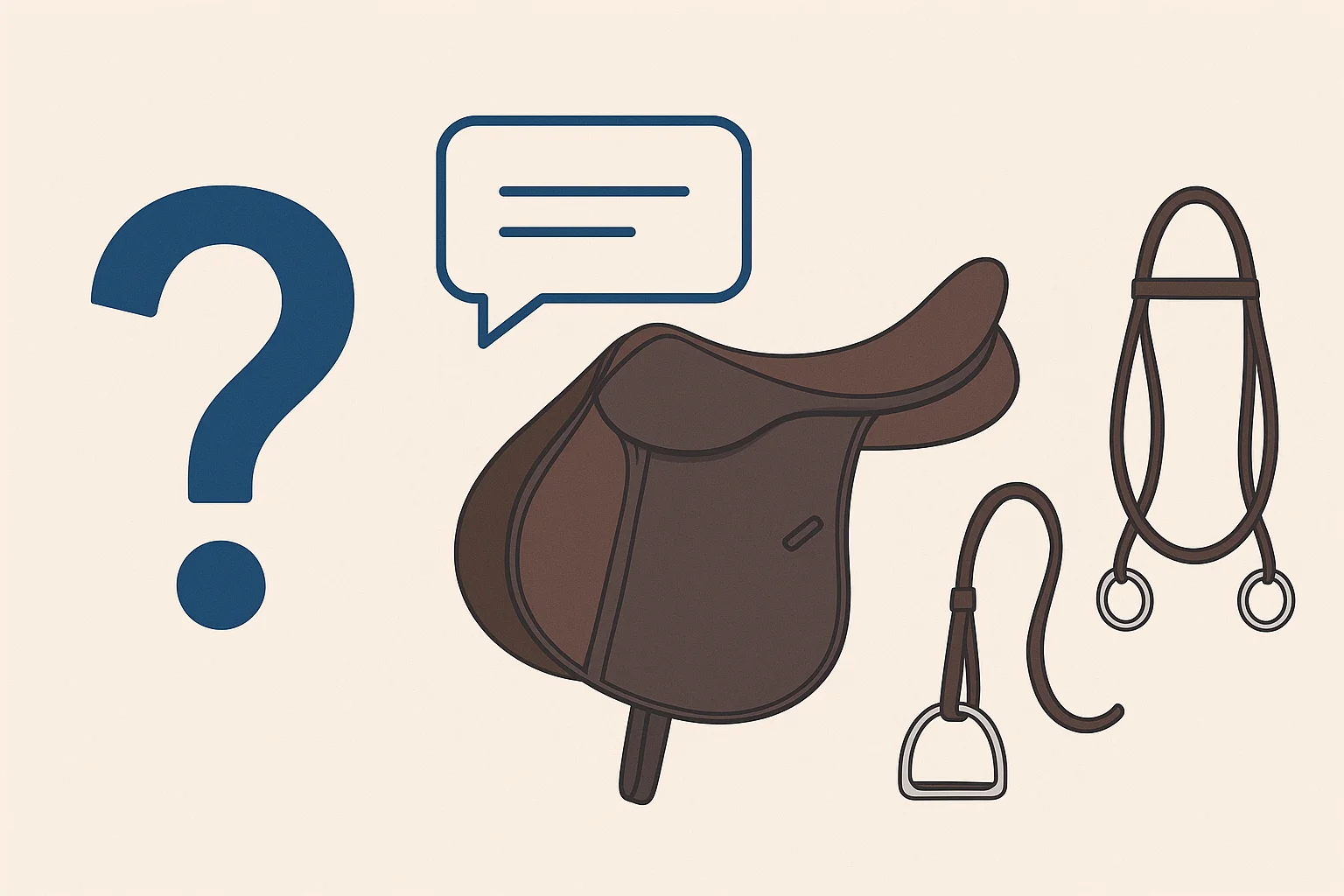Get answers to the most common saddle and tack questions on our FAQ page to keep your horse riding comfortably and safely.
Section 1: Horse Health & Comfort
Question: What causes saddle sores on horses?
Answer: Saddle sores are usually caused by poor saddle fit, dirty or bunched pads, or riding for long periods without breaks. They appear as hair loss, swelling, or open wounds. Using properly fitted tack and cushioned saddle pads can help prevent them. Read more
Question: How can I tell if my horse is uncomfortable under the saddle?
Answer: Watch for signs like pinned ears, swishing tail, resistance to saddling, bucking, or a hollow back while riding. These can all indicate pressure points or a poorly fitting saddle. More signs here
Question: Can saddle pads help improve horse comfort?
Answer: Definitely! High-quality saddle pads help distribute pressure, absorb shock, and prevent friction. Memory foam, gel, and wool are great options for added comfort. Our top picks
Question: What type of girth is best for sensitive horses?
Answer: Anatomical or fleece-lined girths reduce rubbing and pinching. Look for options with elastic on both ends and breathable materials for extra comfort. View recommendations
Question: How often should I check my tack for comfort-related issues?
Answer: Do a quick check before and after every ride and a detailed inspection weekly. Look for worn leather, loose stitching, or parts that cause rubbing. Get our full tack checklist
Question: What’s the best saddle for a horse with a sensitive back?
Answer: Lightweight, flexible saddles or those with adjustable gullets are ideal. Pair them with shock-absorbing pads to reduce pressure and enhance comfort. See the best options
Question: How do I prevent back pain in my horse?
Answer: A properly fitted saddle is a must! maintaining a good rider posture, and vary your horse’s activities also helps. Massage, chiropractic care, and supportive pads can also help. Prevention tips here
Question: What is bridging in a saddle, and why is it bad?
Answer: Bridging happens when the saddle touches only the front and back of your horse’s back, creating pressure points in the middle. This can cause pain and behavioral issues. Learn how to fix it
Question: Can an old or cheap saddle hurt my horse?
Answer: Yes without a doubt. Saddles that are worn out or poorly designed can cause discomfort, muscle strain, and spinal damage. Always prioritize a proper fit and quality materials. Find out why fit matters
Question: What is a Saddle Tree and Why Does It Matter?
Answer: The saddle tree is the internal frame that gives the saddle its shape and structure. It’s important to choose a saddle with the right tree size and shape for your horse to ensure comfort and prevent injury.
Question: How Do I Know If My Saddle Pad is The Right Thickness?
Answer: The saddle pad should provide enough cushion to protect the horse’s back from pressure points but should not be so thick that it alters the fit of the saddle. Choose the thickness based on your horse’s back shape, saddle type, and the type of riding you do. Western Pads English Pads
Question: What is the difference between a close contact and a dressage saddle?
Answer: A close contact saddle is designed for jumping, providing the rider with closer contact and more mobility. A dressage saddle is deeper-seated, with longer flaps and a straight cut, allowing the rider to maintain a secure position during dressage movements.
Question: Can I use a synthetic saddle for long rides?
Answer: Yes, many synthetic saddles are designed for endurance and long rides. They are lightweight, durable, and easy to maintain, though leather saddles may offer more comfort and tradition for long-distance riders.

